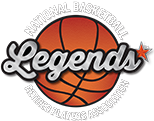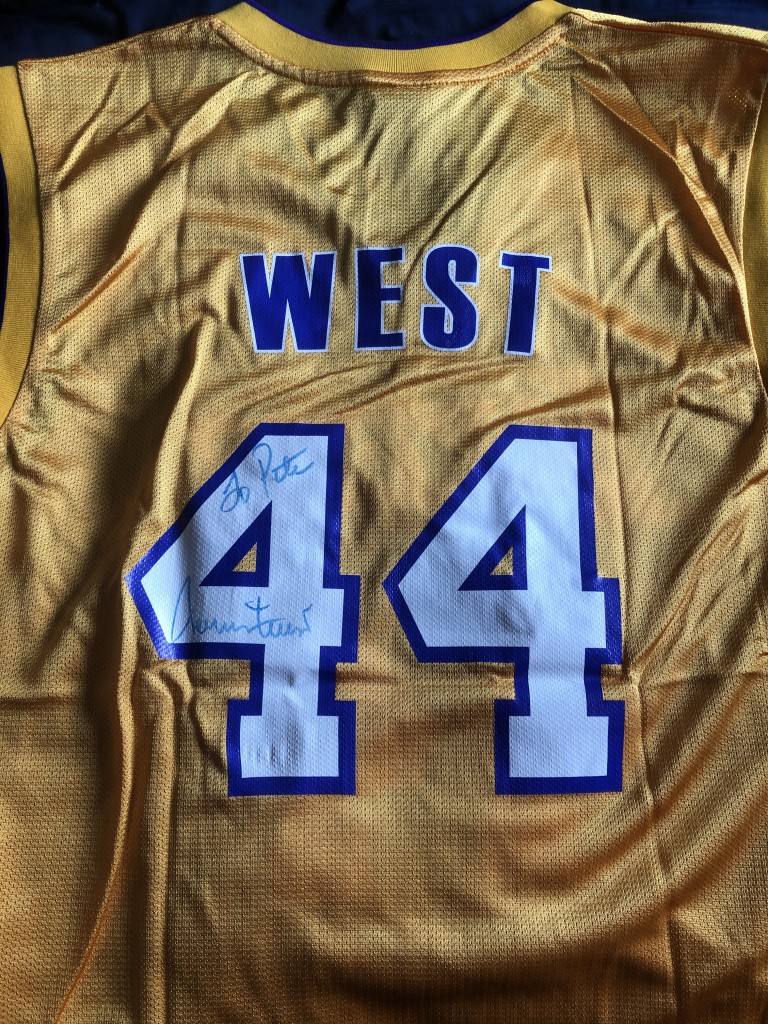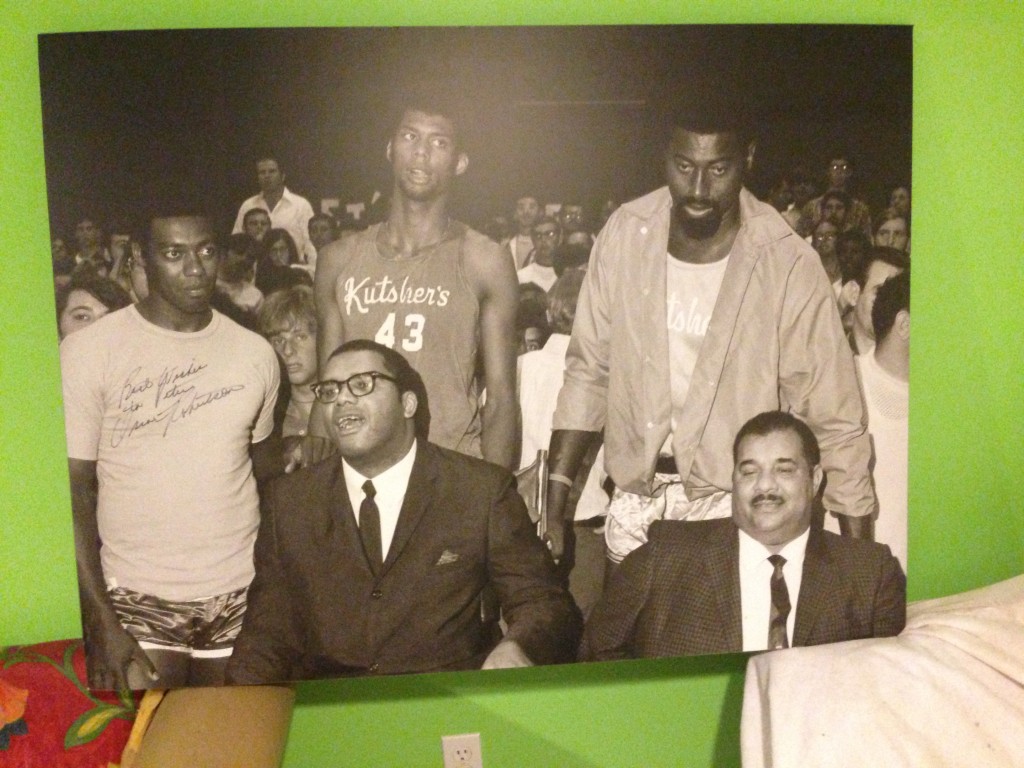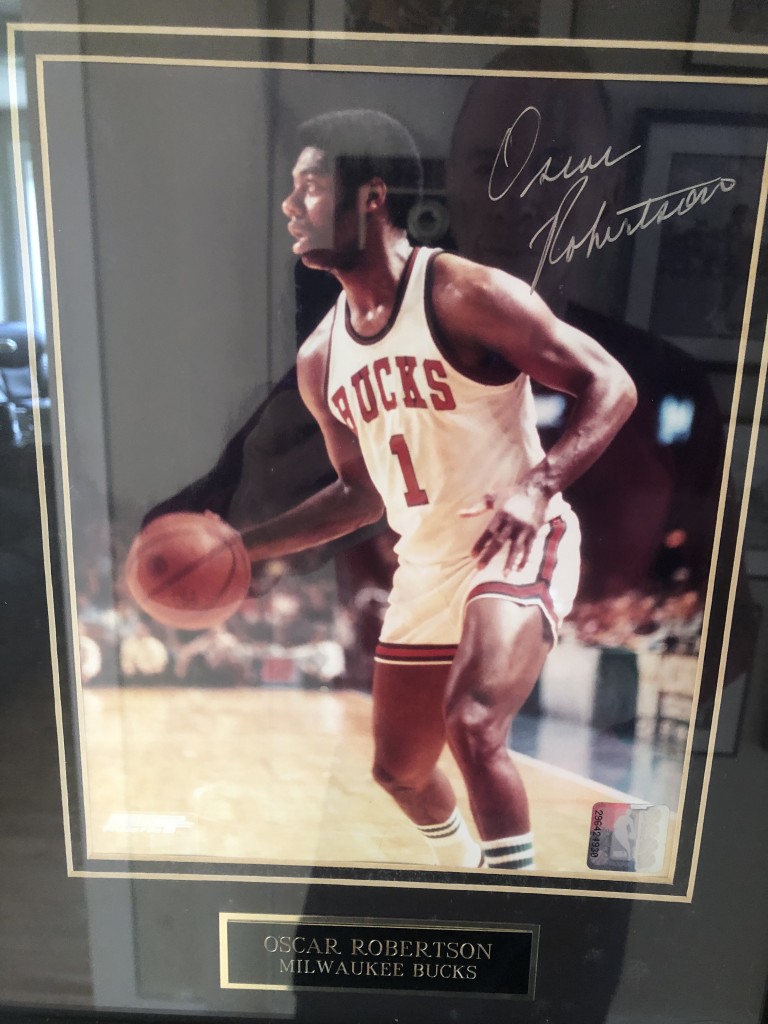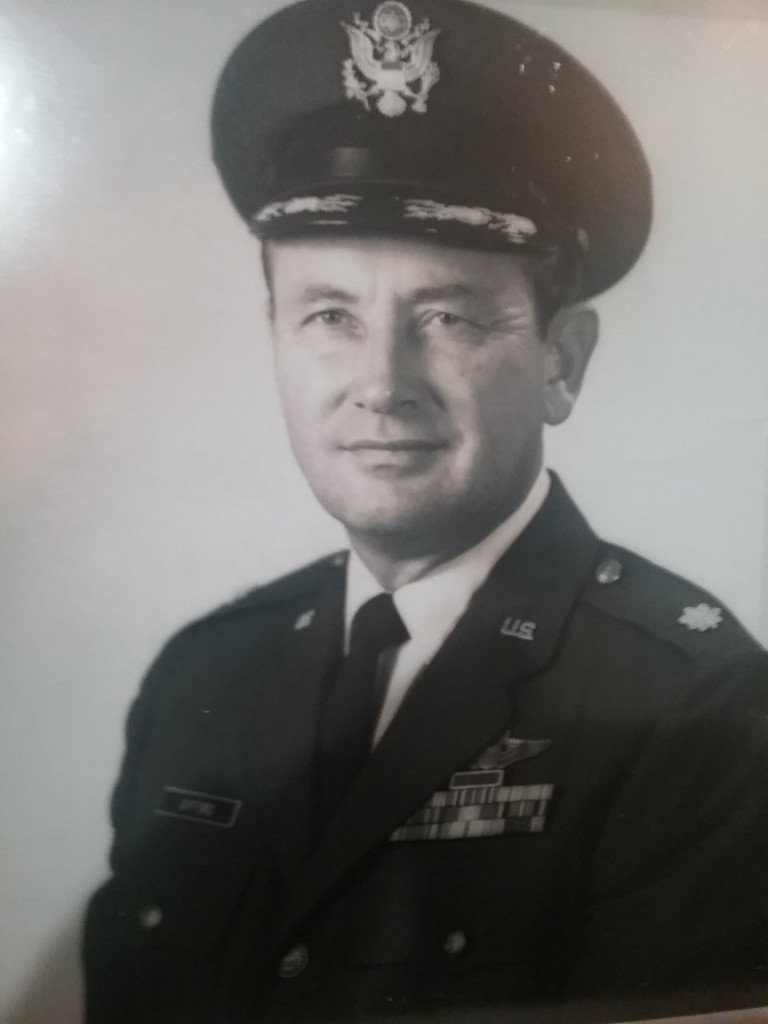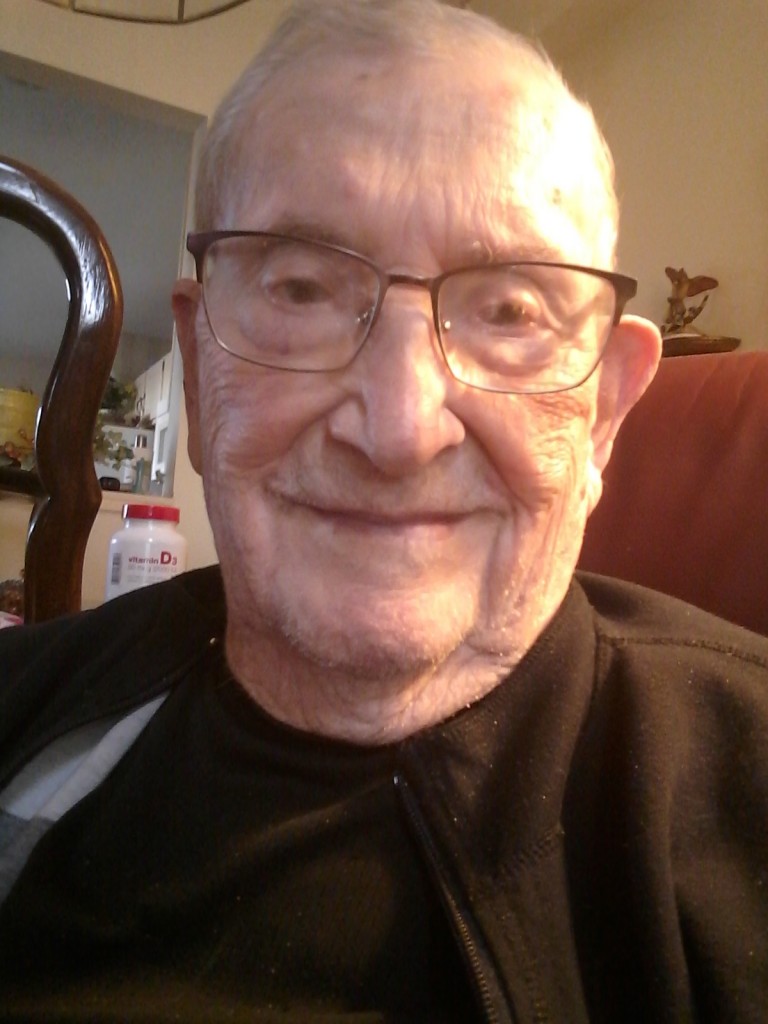The Good, the Bad and the Ugly of NBA 75, er 76 Voting
By Peter Vecsey
Where’s Ford Frick’s vote-voiding common sense when we need it?
Saratoga Springs--One of the best things about writing on an irregular basis, free from pressure to produce on any semblance of a deadline (also one of the worst things), is being able to camp at Lake Placid for however long it takes after something rubs me raw. This is done to avoid tackling issues unprofessionally, insensitively…or by the facemask.
Ready or not…
Almost a month has elapsed since the NBA completed its announcement of the league’s all-time Top 75 players, which became 76 due to a deadlock (pending essay competition) elected by an illogical 88-person panel.
In retrospect, it was the soundest portion of the process.
Perhaps I’m ill informed, but I thought the original number of voters was 75. Fifty voted for the Top 50, so I figured 75 would vote for 75. At the abysmal least, the extra 13 makes no symmetrical sense. I’m left to deduce a whirlwind of campaigning for the commissioner’s approval must’ve ensued behind the screens by people craving to get credit for something so theoretically sacrosanct.
Seeing my name, even today, amid the select 50 voters on page 8 of “The NBA At Fifty” book remains a cherished career acknowledgment. Hence, I altogether understand any fervid desire to be recognized for judging the Top 75, er, 76.
It doesn’t make me any less aroused, though.
I probably should’ve camped out longer on (in?) the lake.
You screw with the sanctity of the voting, you screw with the sanctity of the vote.
Let’s turn the page to 1996. U wit me, G?
When the chosen 50 voted for the NBA’s half-century Supreme Court, the marquee players from the assembly were ultimately bestowed with lithographs signed by the 49 living legends (Pete Maravich died Jan. 5, 1988), extravagant commemorative rings and splashy, custom-made leather jackets.
It’s safe to say a bunch of rich people now own a large number of those lithos, or maybe only an obsessed couple of memorabilia magnates do.
George Gervin, I’m informed, was one of the first to cash in on his lithograph, pocketing 120G. Its sale painfully hammered home one of a plethora of financial lifetime mistakes I made by not lunging at Sam Battistone’s offer to buy one (of the 100 made) in ’97 for $15,000.
The signed lithographs were the brainstorm of the former Jazz owner. Thus, he could do whatever he wanted with some of them (don’t know how many); the league controlled the majority of the remaining 50, and every now and then, one or two would show up for sale at the NBA Store.
Despite an additional dozen deaths among the elite Top 50 since that luminous list was formed, the price has dropped (seems like the opposite would be true, but that’s what I’m told by someone who deals in such souvenirs) to the 30-40G range. Makes me feel only twice as stupid.
Many royal jewels also have changed hands, so to speak. One Top 50 player, I hear, sold his, as well as his Hall of Fame and championship (no ‘fingering’ Charles Barkley for this) rings. He then notified the NBA, HOF and the title team his stuff had been stolen. Replicas were made and the legendary lowlife then tried to sell them as originals to one of the above-mentioned moguls. The buyer was aware! He stuffed the cash back in his briefcase.
Auction houses already are standing by for beseeching calls subsequent to All-Star Weekend (Feb. 18-20) in Cleveland, where the 2021 Supreme Court will be honored and showered with correspondingly gaudy gifts.
Not coincidentally, the ‘96 Top 50 (had it been 51, Dominique Wilkins would not have fumed 25 years for being defectively denied royal recognition) event also was staged in Cleveland.
Time out for a story:
NBC assigned me to interview unhinged ex-Cadavers’ owner Ted Stepien whose board room behavior forced the NBA to adopt a salary cap and a rule forbidding teams to trade No. 1 picks in consecutive years, I spent several hours at his home. When David Stern got word of Sunday’s halftime feature from network sports boss Dick Ebersol, it was summarily squashed.
I have it in case Donald Sterling or Robert Sarver would like to hear if anything he said sounds relatable.
While not on the subject, it’s worth noting that Bob Lanier was the lone Top 50 voter of consequence not to achieve prominence. He voted for the Top 75 as well and again was bypassed.
A convincing case could be made that Lanier should’ve made both lists—the latest at the very least—but that would’ve taken thoughtfulness (i.e. responsibility) rather than plagiarizing a 25-year-old cheat sheet.
This is where I stop rationing pablum.
The conspicuous hindrance for Lanier and many others (see below) was that two-thirds of the outcome was essentially fixed by the Silver’s NBA bequeathing the 37 living members of the Top 50 a vote. Six turned it down--Bob Cousy, Larry Bird, Tiny Archibald, Karl Malone, Kevin McHale and Hakeem Olajuwon.
Unconsciously, if not unconscientiously, the NBA’s padding of the ballot box principally dictated the advancement of the Top 50. They were prohibited from naming themselves, but there’s minimal doubt they only had eyes, and ayes, for each other!
A jesting Cousy told me he decided at the last minute to demur when alerted he couldn’t vote for himself.
Of course, they supported each other! Their fierce loyalty was to majestic past performances and blood-spattered competition among themselves, not the 30 squads of snipers feasting on projectiles from above the beyond in today’s predominately no-touchy-no-feely league.
That explains the 31 voters’ rationale. Silver’s savants should’ve cut the number in half, but obviously wanted fortification the first 50 years of history was sufficiently represented.
I begrudgingly accept that clumsy guesswork. What I find downright unacceptable was the conclusion by numerous media voters and innumerable lazy bones to rubber stamp the harebrained determination.
One columnist I respect inordinately told me he voted for the full 50 because of not wanting to disrespect the decision-makers, as if they wouldn’t have appreciated how players upgraded regarding agility, strength, outpost accuracy and any other skill and physical element you care to mention.
If the same 50 voters had a say in the latest poll, guaranteed their votes would’ve radically changed, it says here.
Another columnist wrote he deferred in numerous instances to wise men who knew old-testament players with whom he was unfamiliar. Why stop there? Why not just transfer the bouncing ballot to the sagest soul he could find?
Yet another columnist extensively researched the project (I’ll give Steve Aschburner, via NBA.com, that). He discovered that six of the 10 on the 25thAnniversary Team—anointed by six owners, three general managers (including Red Auerbach) and league publicity director Haskell Cohen—were not among the 11 chosen for the 35th.
In 1980, the Professional Basketball Writers Association picked the team. Bill Russell, Cousy, Bob Pettit and George Mikan were the lone leftovers, while Dolph Schayes, Paul Arizin, Joe Fulks, Sam Jones, Bill Sharman and Bob Davies were scratched.
The four joined Kareem Abdul-Jabbar, Wilt Chamberlain, Elgin Baylor, Julius Erving, John Havlicek, Oscar Robertson and Jerry West on the 35th, who were selected regardless of position or completion of careers (unlike the 25th, explaining the absence of Wilt, Elgin, Oscar and The Logo).
So, Aschburner knew there was a Supreme Court-changing precedent. He also understood that keeping the Top 50 intact would cost many meriting modern-era players their rightful place in history. I know this because we discussed the ramification beforehand.
Aschburner E-ZPassed the Top 50 anyway.
Why? His hackneyed logic was employed by more of my bunko-balloting brethren than should have been allowed by law, and segment void of qualifications (see below) to vote in the first place.
“For the prestige and honor to endure, that one and this one had to last,” Aschburner wrote. “That’s when I decided I had to keep the first 50 intact and add 25.”
A 40-year savvy NBA courtside veteran, Aschburner always has had it goin’ on. In this case, he was dead wrong! This was not an ‘add 25’ term paper…it only became one to those who dis-serviced it.
Clearly, the league failed to make it unassailably clear that 1996’s version of the high court was not a lifetime gig.
Aschburner allowed also he endorsed the entire 50 because he didn’t want to insult the families of anyone forsaken.
Huh?!
What about the families of the players who were stiffed back then, I scornfully retort? What about the hurt feelings of Walt Bellamy’s family, as a prime odious omission?
Shortly after Bells died Nov. 2, 2013, I spoke to his wife, Helen, for a Finals program tribute I wrote on NBA family members—players, coaches and owners--who died that year.
“Walt never said a word about not becoming a Top 50 honoree, but it hurt me,” she said when I wondered how he felt about being ignored. “I’m not an envious person and I’m not selfish, but Walt was better than some that made it. I had to turn it loose.”
Never to be corrected!
In the mindlessness of the majority, the Top 50 preamble was so pristine—no deletions and a scant two additions, Bob McAdoo and Dominique--that our task became choosing a Top 23 from the past 25 seasons.
I could’ve saved a lot of time and effort had I realized the list was written on tablets.
Arizin, who died Dec. 12, 2006, wasn’t aware of that, either. Nor was the Hall of Fame forward—a made man on three NBA anniversary lists—so full of himself he felt remotely irreplaceable. Too bad the 88 recent voters didn’t get to hear his voice of reason before senselessly and sightlessly prancing to the polls.
“In his opinion, at that time (1996-97), there were 15 players whose omission from the list would have impugned the integrity of the entire list, 15 players were non-debatable, locks, his son, Michael, has repeatedly told me.
“He felt that any one of the remaining 35 in the Top 50, while all great players, could have been replaced by a great player who was not included in the Top 50 without in any way affecting the integrity of the entire list.”
And yet Aschburner preached the list was so sanctified it could never be revised.
Think about how many stars are stranded on the shoulder of NBA history for the next 25 years until the Century Commission is in session.
Nikola Jokic will be 51 by then, Luka Doncic 47, Klay Thompson 56, Tony Parker 64, Manu Ginobili 69, Grant Hill 74, Joe Dumars 83…to give you a stiff whiff of some affronted players I supported, as well as Dennis Johnson and Bellamy.
Advocates of Medusa Howard claim he got screwed. Had they caught sight of Bellamy having his greatest games against Chamberlain and Russell, often outscoring and outrebounding them early in his career, they’d summarily switch allegiance.
Other than Bill Walton again getting swept in on a misguided current (Mike Pence declined to certify Medical Bill), the most unjustifiable admissions to this versions of the Supremes, I accentuate with steadfast conviction, were Carmelo Anthony and Reggie Miller.
“You mean to tell me, the ninth-leading scorer in NBA history doesn’t rate inclusion on the list?” Mark Jackson squawked.
In 20 seasons, Anthony’s teams parsed past the first round twice in 13 playoff appearances, I counted. I’m not saying he had to win a title, but if you want to make my list, you’ve got to carry your teams deep into the playoffs often, if not always, and escort at least one to star-stained heights (The Finals) on bent and battered wings, whatever it takes.
Granted, Miller refutes the above stipulation. Nevertheless, there’s an exception to every rule. His 8.9 second, 8-point burst that beat the Knicks, shenanigans with Spike Lee and TNT exposure got him into the Hall of Fame and the Top 76.
Miller scored a lot of points.
Gave up a lot of points.
An overabundance of reinforcement for Anthony and Miller meant D.J. or Klay, or Dumars, or Ginobili, or Parker got written off.
It’s gruesome to grasp voters deemed Anthony and Miller more important in the scheme of success than players with multiple titles who doubled as diametrically deft defenders.
I never pretended my choices were perfect (Top 50, now and life in general), but there’s no denying how many clueless voted for Walton, Anthony and Miller rather than Manu, Parker, D.J., Dumars and Klay--thrice a league champion and a military-grade marksman.
Guess Manu didn't give up his body enough coming off the bench his whole career. Guess his innumerable game-winning shots were meaningless. How stupid were the voters not to see what he meant to the Spurs’ supremacy!
Parker was intimately instrumental to the four championships as well. Gregg Popovich turned the keys over to him (one Finals MVP) and Tim Duncan was all for it.
Dumars was in three straight Finals, won ‘em twice, one Finals MVP and accrued consequential conquests of the (Jordan) Bulls and Celtics.
D.J. was Finals MVP when the Sonics beat the Bullets in ’79, six times First Team All-Defense, three times Second Team. The Hall of Fame stiffed him well over a decade before getting it right with a posthumous proclamation.
An obtuse Top 75, er, 76, panel has insulted his memory and irrevocably hurt his family’s feelings.
Cited by Larry Bird as the best clutch shooter he ever played with, he and Johnson were fairly-significant parts of two Boston banners that were raised to the Rastafarians.
Walton crashed the Top 50 & 75 as a result of winning the MVP in the Trail Blazers’ lone franchise championship in 1977. A second title was won as a Celtic in 1986 when he won the Sixth Man award. Walton subsequently won the 1978 regular-season MVP while appearing in just 58 games; the Blazers were 50-10 when he got injured.
Nobody on either Supreme Court played fewer minutes than Grateful Red. He’s not even close to the accomplishments of Klay, Dumars, D.J., Manu, Parker and countless others, whose glittering pro careers persisted far longer, and ring collection is larger.
The Diamond Jubilee vote was not supposed to be about college achievements. It was about honoring the players who did it right and established everlasting, longed-for legacies.
Time to admit, I suspect, that I lied sundry paragraphs earlier. The league’s manifest lack of a distinct direction was inexcusable, but far tougher to take was its suspect segment of appointed electorates. We’re almost about to get to 15 women and Ahmad Rashad who were gifted votes.
At first, I blamed the NBA for Phil Jackson’s arresting absence from the poll, along with a horde of eminently qualified coaches, players, GMs and reporters. As it turns out, he was indeed asked to participate, as I learned from the Zen Hen’s text.
“There was too big a list (75), too many decades (8). If one had a pre-3-point line, or 1980 as Era of Modern b-ball, I would have voted. Bobby Davies, for example was a favorite of Red (Holzman). It was a tough task and really not important to me.”
Less than an hour later, Jackson sent an unsolicited addendum.
“Started thinking about those guys left off that could play—Davies, his backcourt partner (at Seton Hall and Rochester‘s Royals) Bobby Wanzer, Cliff Hagan, Jim Pollard, Jack Sikma, Gus Williams, Bernard King, etc., etc., a challenging list to make choices.”
Jackson liked my response.
“It wasn’t easy for those of us who tried to provide some historical perspective, as opposed to simply promoting the entire Top 50 to the Top 75.”
Er, 76.
I was not alone, but lonely. Mike Breen busted his brain doing homework on the Top 50 players, investigating the serious slights that had occurred, and measuring those from the 1990s until today who appeared to earn entry.
The Boston Globe’s Gary Washburn also understood Mission Unfeasible.
“While the contributions from all-time great players should be acknowledged, there is no way all previous Top 50 players should have been chosen for the Top 75.”
When the fridge full of frozen envelopes was counted, an extensive inventory of modern- and early-era players got seriously shafted.
Sue me for reiterating!
I find Adam Silver and his wokeforce incomprehensibly guilty. They loaded the dice with a predisposed body of Top 50 (31) players, pandered politically to former league executives and genuflected to gender.
Think about it; nearly 18% of the voters for the best male players in NBA history were females. Only one—creditable veteran, Jackie MacMullan—is an actual reporter, practiced at delving into an undertaking this complicated.
I take it back; Japan’s Yoko Mayaji covered the NBA, I’m told, for 34 years.
Mainly from Japan!
I can name a silo full of non-voting male journalists who, in fact, attended practices, exhibitions, regular-season games, press conferences and playoffs on an unswerving basis more often and longer than Mayaji.
Mark Heisler is one. He’s in the Naismith Hall of Fame, but never got a call from the NBA. Same goes for Harvey Araton. Fran Blinebury voted for the Top 50 but got the brush-off this time after 40-plus seasons of duty. Mike Monroe covered the ABA and the NBA until recently. Steve Bulpett’s coverage of the Celtics dates to Larry O’Brien’s term as commissioner. Dan Shaughnessy, Leigh Montville, Ira Berkow, Jonathan Feigen and Ric Bucher must’ve been penalized for being overly experienced.
Get back to me if you need additional samples.
Was this three-quarter century Prix Fixe Menu really the apt occasion to show the world how ‘progressive’ the NBA is at the expense of infinitely more certified lifers on every level?
Clearly, fashioning a woke women’s vote was the intention of Silver and his group grope, the league having barnacled onto that bandwagon years ago.
Party favors such as these furthermore endeared it to social and political promoters, demonstrating its awareness to the plight of females.
Something to that effect. Please don’t quote me.
Unrelated, I’ve learned the league plans to do away with the term “offensive foul” at the risk of offending anyone.
You got that right; the NBA does not care…if active and retired NBA players and coaches feel insulted that active and retired WNBA women got votes.
Does not care whatsoever that exceedingly less knowledgeable voters jumped the line in front of those exceptionally more acquainted and qualified to evaluate NBA eras.
Does not give a Flying Wallenda that 14 of 15 women ‘earned’ votes for no other reason than they’re women!
I wonder how many active and retired NBA players got votes during this past season when the WNBA picked its Top 25?
Was the list even revealed? If not, why not? If so, that should answer my question.
I’m also curious how the WNBA/women TV analysts managed to compare epochs of ever-changing skills and rules when Phil Jackson reckoned it impossible.
Of course, they couldn’t. I’m willing to wager all the money you’ve recently lost betting spreads and over/unders, the NBA’s latest encouraged, commercialized craze.
For the first 70-something years of its existence, the NBA banned any connection to the corruption and temptation that gambling on games poses to those involved, particularly referees, you might recall.
Then, suddenly, when profits decisively dropped due to China—which copped an attitude regarding a single tweet supporting Hong Kong dissidents and pulled the NBA’s TV deal—combined with the onslaught of the coronavirus, and millions of Americans distancing themselves from the league’s in-fans’-faces political slant, the 30 owners adopted an addiction as decadent and devastating as illegal drugs and alcohol.
Evidently, the NBA does not care that its perverted policy will sooner than later sentence hundreds of thousands of kids, whose phones are their bookies, to lives attending Gamblers Anonymous.
We now return to my irregularly scheduled primary grievance.
Down the backstretch, I could cut myself a sliver of slack by pretending I have no quarrel with Hannah Storm, Ann Meyers and Nancy Lieberman getting votes. Yes, they’ve paid decades of dues along NBA sidelines and in the TV trench mouth.
However, if Storm deserved a vote, Pat Williams, Paul Silas, Dick Motta, Richie Guerin and Phil Chenier are far more deserving.
If Lieberman deserved a vote, Del Harris, Norm Sonju, Rick Sund, Garry St. Jean and Richie Adubato are far more deserving.
If Meyers deserved a vote, Eddie Doucette, Stu Lantz, Ralph Lawler, Al McCoy, Bill Worrell and George Blaha are far more deserving.
If Doris Burke deserved a vote, Mark Jackson, if not Jeff Van Gundy, and Dick Stockton are far more deserving.
If Rachel Nichols deserved a vote, Hubie Brown, Kenny Smith and Scott Hastings are far more deserving.
If Becky Hammon deserved a vote, Larry Brown, Dick Barnett, Henry Bibby, Jim Cleamons, Dave Twardzik, Gar Heard.Tim Grgurich, Pete Carrilare far more deserving.
If Candace Parker deserved a vote, Don Nelson, Danny Ainge, Jack Sikma, Cliff Hagan and Clifford Ray are far more deserving.
If Carol Blazejowski deserved a vote, Donnie Walsh, Steve Patterson, John Gabriel and Mitch Kupchak are far more deserving.
If Cynthia Cooper deserved a vote, Charlie Scott, Jeff Mullins, John Lucas, Calvin Murphy and Downtown Freddie Brown are far more deserving.
If Kara Lawson deserved a vote, Doug Moe, George Karl, Butch Beard, Mike Dunleavy, Bernie Bickerstaff, Kevin Loughery and Fred Carter are far more deserving.
If Sheryl Swoopes deserved a vote, Gail Goodrich, Eddie Johnson, Jim Barnett, Geoff Petrie, Rick Carlisle and Jerry Sichting are far more deserving.
If Sue Bird deserved a vote, Cheryl Miller is more deserving.
In wrapping up this manifesto, I find it hard to believe O. J.’s best man got a vote, much less was able to fill it out for 75 players without the help of a teleprompter.
Apparently, there was a software glitch after Rashad wrote “My main man” 75 times…
…or Michael Jordan 175 times.
How does Silver explain Jim Gray not cracking the NBA’s balloting? Check bounce?
In closing, allow me to restate what an honor it was to be part of the Top 50.
Allow me, also, to deny being part of the Top 75.
I’m guessing this probably abolishes my chance of an invitation to vote for the Top 100. Then again, maybe the woman commissioner will gift some undeserving males votes.
*****
I did something here I’ve never done before. I gave Michael Arizin a preview of my vitriol a couple days before Monday’s presentation. His slightly edited reaction follows. I respond respectively. Almost.
Arizin: Your rant on automatic Top 50 carryovers was a little confusing to me. You were frustrated that 31 of the surviving Top 50 members were allowed to vote because…
…In your opinion, the “31” voted as a block in favor of their peers. I don’t have that data. But who better to judge the older players?
Perhaps, I was reading more into it than I should, but for me, it woulda been helpful if you gave your opinion of how many of the Top 50 (not names) should have been carried forward….so that the “no interest in history” contingent of today don’t assume that 40 were “gratis picks,” I suspect you would have retained at least 80% of the original 50?
On a different note, I shed no tears for Jokic, Doncic, Thompson, Parker, Ginobili or Hill…only for Dumars having to wait for the Top 100. Dad & Cousy were 70 and Schayes 72 at the time of the Top 50.
Vecsey: My point is, by giving a block of votes to 31 people when only 75 slots were available, significantly slanted the vote. There are plenty of older coaches, players, scouts and radio/TV broadcasters, as I catalog, scrupulously capable & coherent to judge eras, though Jackson feels differently. Voters from eight eras should've been as proportionate possible.
As noted in a previous column, I voted for Shaquille O’Neal four years into his career in 1996. Saw enough. Didn't have to see anymore. He belonged on Top 50. Had Shaq suffered a career-ending or debilitating injuries, as Walton did, shortly thereafter, my decision would've proved to be regretful. At the same time, Walton's chronically-injured career was long over when elected to the Top 50. Preposterous he made it, while Maurice Stokes, Connie Hawkins, Brandon Roy, Ralph Sampson and Bernard King weren't vaguely considered for The Supremes.
I feel the same way about Joker and Luka. I've seen enough. They belong. Their multi-talents are on par with 90% of the players on the Top 75.
The players you named who were 70 or older when the Top 50 were crafted, either made the Top 25 and/or Top 35. Klay, D.J., Dumars, Ginobili and Tony Parker got royally stiffed. Grant Hill, not so much.
FYI: After much deliberation and trepidation, I subtracted nine players from the Top 50.
If I were pleased with my submission, I would reveal my select 75. However, I felt I’d committed multifarious mistakes minutes after completion.
On the other hand, I don’t mind disclosing a no vote for James Harden. Couldn’t stomach watching him play in Houston, and know Rockets’ teammates couldn’t stand watching him play either, while on the court together.
